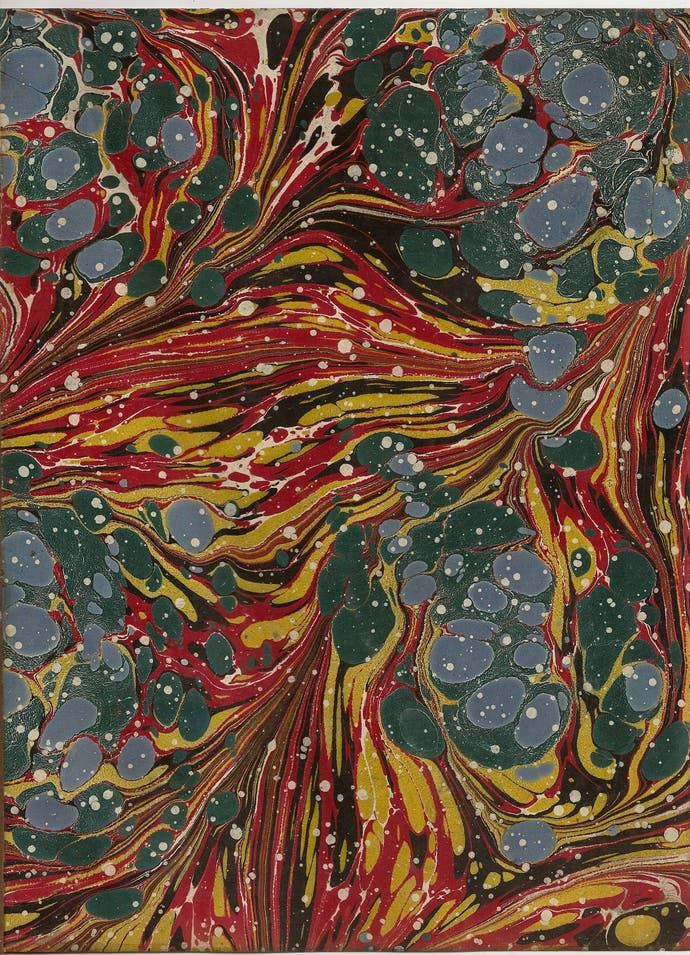Someone should make a game about: marbled paper
Metamorphosis.
I grew up in the 1980s in Kent, and I swear that there was still a bit of the Victorian era lurking in the streets at that time. The local library was filled with massive oil paintings of cattle, along with stuffed owls resting under bell jars. There was a corner shop that sold truly bizarre boiled sweets by the quarter. There was a second-hand bookstore that was also somebody's home, wonderfully gloomy and silent but for ticking clocks, and every room had stacks of decaying books whose pages had grown thick with the passing of time. Those books! Cloth covers, spines peeling away, and inside them all endpapers of swirled blues and reds and golds: marbled paper.
This came back to me last week when I was hunting for something to read. Inside one of those heavy A4 books you get filled with rainy day activities I found an entry of paper marbling. It was like the peculiar odour of that old bookstore rose off the pages and engulfed me: camphor, Lily of the Valley, the stale sugar of a nearby pantry. Paper marbling! I was transported.
For those of you who aren't 41 and really starting to lose it these days, marbled paper is paper that has had those wonderfully swirls and blossoms and blooms of various colours of inks spread out across it. You come across them in the endpapers of books most often, but I gather the history of the process goes back hundreds of years and spans the world. Marbling refers, I think, to the wonderful veins and cracks of marble and other metamorphic rock - those bits of rock that seem to have entire worlds waiting in their depths, that go on unfolding themselves the further you peer into their surfaces. Marbled paper is definitely like that. I can stare at it for hours - I am boring, I should add - and it sort of mesmerises me.

There is a game in here, I think. Not least in the process of marbling paper. Back when I was a kid I never thought about how this stuff came to be. But now I know: a tray of water with marbling ink dropped onto the surface. Different coloured inks are encouraged to mingle and swirl around one another with a stick or a needle. Then the paper is laid on top for sixty seconds or so. Wash the paper under running water - I imagine this bit's a touch nervy - and then hang it to dry.
It reminds me of the old days of dark rooms - of taking clear paper and liquid and magically revealing dazzling images. It's all a bit more poignant, too, because I can't do any of this stuff at the moment. I have paper and water and a tray, but I don't think it's right, really, to get people to come out to the house just to drop off marbling ink. Hard to argue that's essential. Inevitably I just think about it more intently because it's all out of reach. The marbled paper gets muddled up with maps in my head - where do these pages take us, what do they show us, what is there waiting if we look hard enough?
More than anything I wish I could go back to the old books in that store and take another look at those endpapers. Were the marbled pages printed, all alike and run off of some central design? Or were some of them genuinely marbled, each page taking a unique impression from a single instance of ink meeting water? A moment, a flux, captured and fixed in place. Books, more than anything else I can think of, are magical objects: they contain multitudes, don't they? And sometimes the secrets that lurk inside have nothing to do with words.

